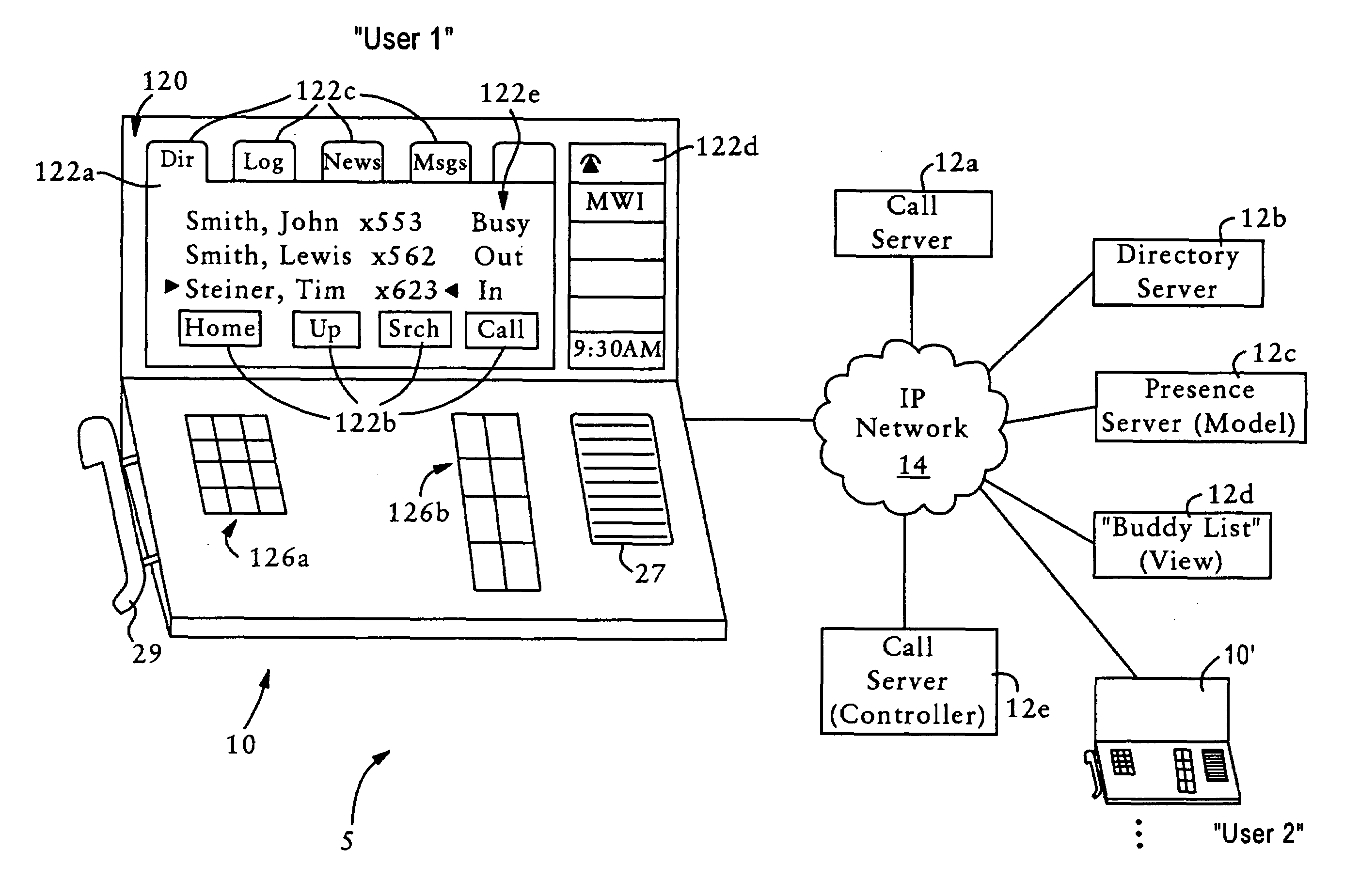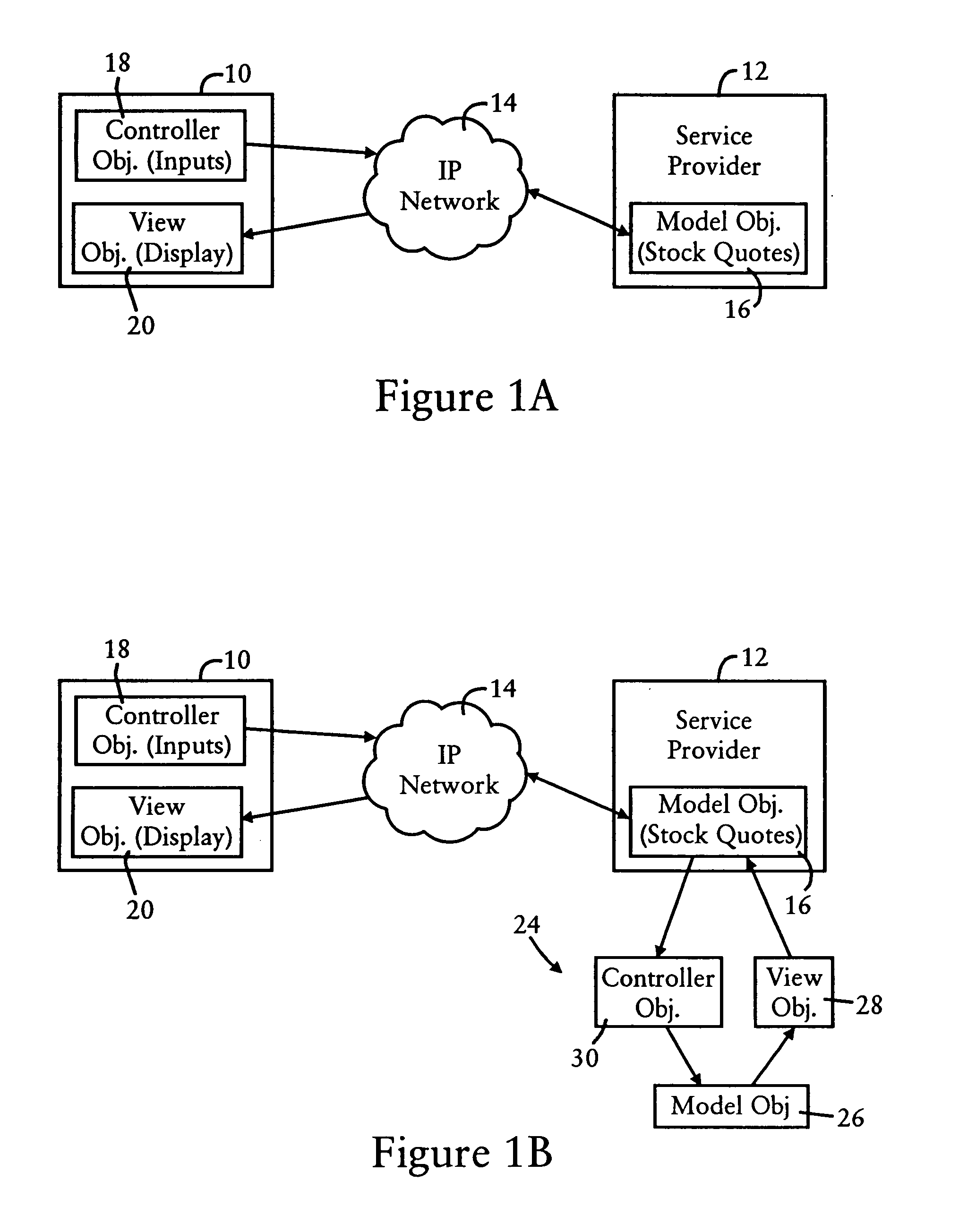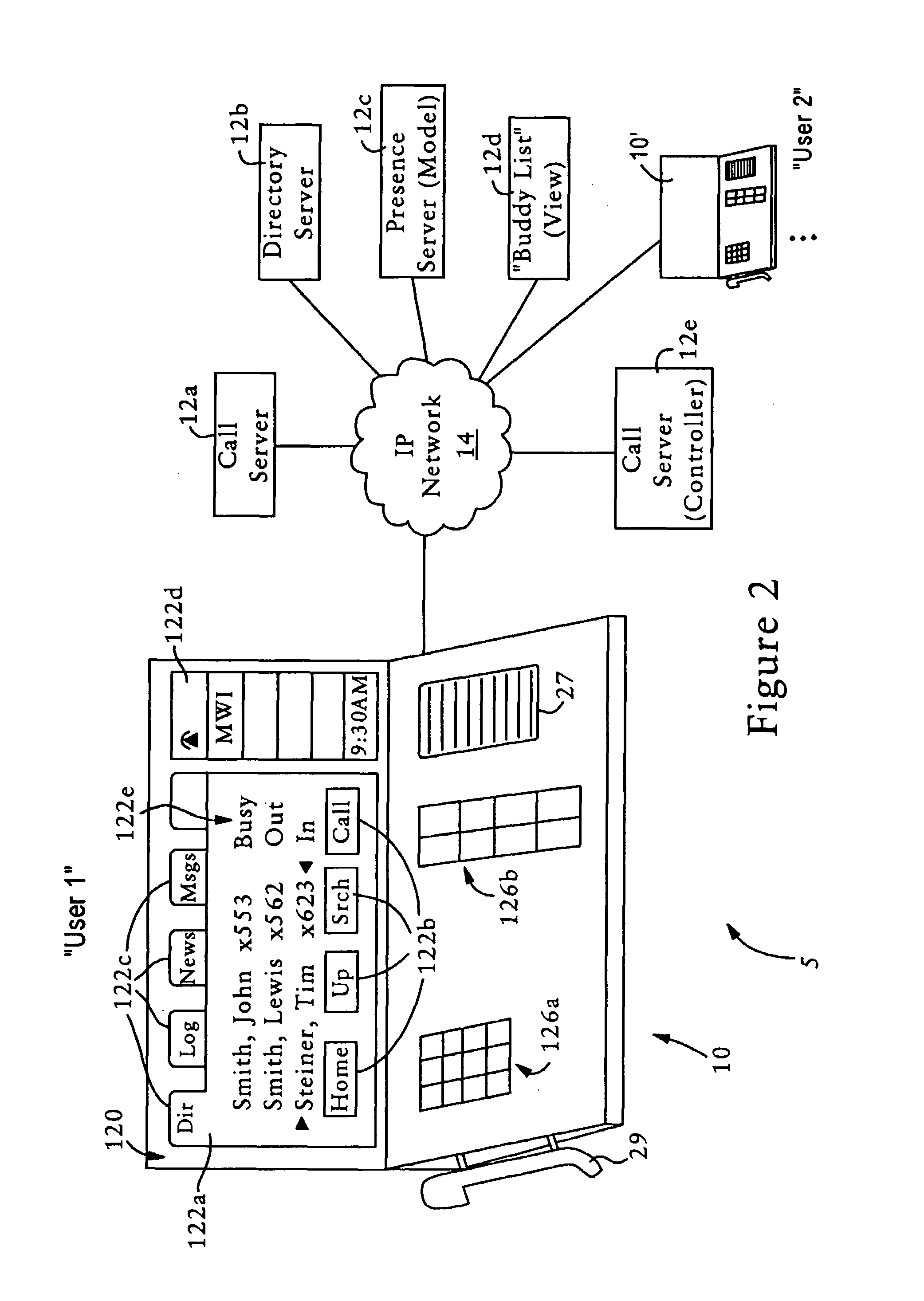Delivery of services to a network enabled telephony device based on transfer of selected model view controller objects to reachable network nodes
a network enabled telephony and model view controller technology, applied in the field of network enabled telephony devices, can solve the problems of limiting the availability of features that can be added text, data, or images cannot be transferred to the telephony device, and the software of the voip telephone software restricting the manner in which different application services can be provided, so as to achieve enhanced communications services
- Summary
- Abstract
- Description
- Claims
- Application Information
AI Technical Summary
Benefits of technology
Problems solved by technology
Method used
Image
Examples
Embodiment Construction
[0028]The disclosed embodiment is directed to an arrangement for providing independent control of service objects, including a model object, a view object and a controller object, based on exchange of service transaction messages that enable transactions to be performed by the respective service objects to generate a network based service, for example instant messaging. The use of service transaction messages exchanged between service objects enables the distribution of the service objects across respective network nodes. Moreover, the independent control of service objects enables a service object to be dynamically transferred (i.e., while services are being provided to the user) to another network node, while maintaining a user-perceived continuous service (i.e., without the user perceiving any interruption in the network service). A simplified description will first be provided of model view controller technology implemented in a network-enabled user interface device, for example...
PUM
 Login to View More
Login to View More Abstract
Description
Claims
Application Information
 Login to View More
Login to View More - R&D
- Intellectual Property
- Life Sciences
- Materials
- Tech Scout
- Unparalleled Data Quality
- Higher Quality Content
- 60% Fewer Hallucinations
Browse by: Latest US Patents, China's latest patents, Technical Efficacy Thesaurus, Application Domain, Technology Topic, Popular Technical Reports.
© 2025 PatSnap. All rights reserved.Legal|Privacy policy|Modern Slavery Act Transparency Statement|Sitemap|About US| Contact US: help@patsnap.com



